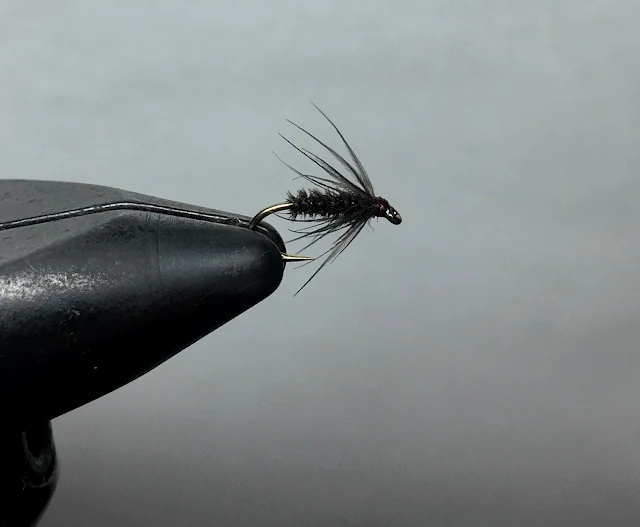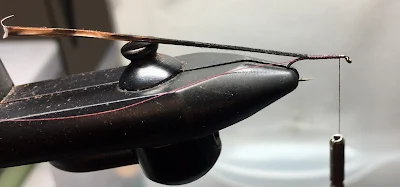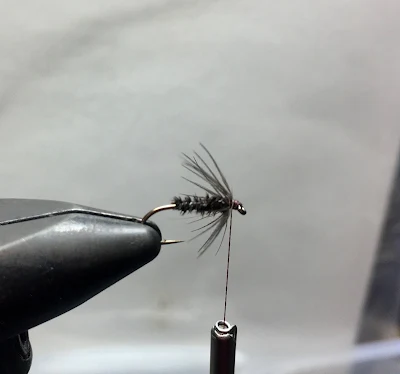How to tie flies
Welcome to the bench. I’m Johnny Utah, and these are the flies I tie, fish, and trust. From photo-by-photo tutorials to full tying videos, this blog’s built for tiers who want to learn the right way—no fluff, no shortcuts, just fishy patterns that work.
Monday, April 14, 2025
Wednesday, April 9, 2025
Fly Vision™ Tying Course Begins – Weekly Beginner Fly Tying Tutorials for Trout
Fly Vision™ is proud to announce a brand-new series built for those just stepping up to the vise.
🎓 Introducing the Fly Vision™ Tying Course – a weekly lineup of beginner fly tying tutorials focused on trout. Each video breaks down a proven, effective fly pattern with clear instruction and clean footage—just what you need to start strong.
The official course kicks off with its first full tutorial on Friday, April 18, 2025.
But before that, we’re dropping a cinematic Short this Saturday, April 12, to introduce the course and set the tone.
💥 What to Expect:
New beginner fly tutorial every Friday
Straightforward, trout-tested patterns
Clean visuals, no gimmicks, and real results
A growing course playlist for new tiers to learn at their own pace
Whether you’re brand new to fly tying or just want to brush up your skills with proven patterns, this course is made for you.
And we know beginners have questions—so don’t hesitate to comment on the videos. If enough interest builds, live sessions may be coming soon.
📺 Watch the Trailer Short – Saturday, April 12
📘 Full Course Begins – Friday, April 18
🧵 Watch & Subscribe here:
https://www.youtube.com/playlist?list=PLus9f7I9ExhenzIZmIcImQP9yCM65ULHn
Tied by me. Delivered through Fly Vision™.
🎣 Johnny Utah // @howtotieflies
Sunday, April 6, 2025
NG Hendrickson – Hatch Weapon. Created by Johnny Utah.
Master the Hatch: The NG Hendrickson Fly Pattern
This is when the river flips. And if you’re not ready, you’re just watching fish feed.
But I don’t guess. I tie the NG Hendrickson—a pattern I created for one reason:
To catch trout during the Hendrickson hatch.
Dry, wet, or emerger—it does it all.
🎯 Why Hendricksons Matter
The Hendrickson hatch is one of the most important hatches in the eastern U.S. and beyond. Depending on where you fish, it kicks off in early to mid-April and continues into May. These mayflies (Ephemerella subvaria and invaria) get trout looking up—and often aggressively.
The naturals have soft colors, anywhere from cream to dusty pink, with a staggered and vulnerable emergence. That vulnerability is the key.
Trout feed across all levels during this hatch. You need a fly that does more than one job.
🪰 What Makes the NG Hendrickson Different
This isn’t a traditional dry.
It’s not a traditional wet.
And it doesn’t need to match anything exactly.
It’s impressionistic.
Built with chenille for body, soft-hackle style collar, and a profile that lets you fish it dry, wet, or just under the film as an emerger.
It’s simple, fast to tie, and built to put fish on the line.
Created by me—Johnny Utah—and field-tested during real Hendrickson hatches, and it works.
📽️ Watch the Fly Vision™ Full Feature
👉 Watch on YouTube
📺 Visit the Channel
🎣 Tied by Johnny Utah-Fly Vision™ @howtotieflies
Saturday, April 5, 2025
Emerald Trout Bane – Built from Salmon Skin, Born for Trout
Emerald Trout Bane
Tied with salmon flash. Fished for trout fury.
Dark on Top. Light on the Bottom. Deadly All Around.
This one wasn’t born in a fly shop.
It came from watching, thinking, and messing around with what trout actually chase.
And it started with a flash of two-tone.
I saw a nymph one day—dark on top, light on the bottom—and something clicked. That contrast just felt right. So I started riffing… and what came out was the Emerald Trout Bane.
Built on a basic nymph hook with simple moves, but it hits harder than it looks.
The key is the wrap technique—tail fibers up top, open-wrapped forward to build that natural gradient from light to dark.
And yeah, it’s tied with golden pheasant.
That same flashy skin most guys save for salmon flies.
But guess what? Salmon are trout too.
And trout know what’s good.
Materials – Emerald Trout Bane (Original Pattern by Johnny Utah)
-
Hook: Nymph hook
-
Thread: Montana Fly Co midge body thread – Light Olive
-
Tail: Golden pheasant body feather fibers (emerald)
-
Body: Open-wrapped butts of the tail fibers—dark on top, light underneath
-
Thorax: Light olive ice dub
-
Wingcase: Golden pheasant body fibers (same as tail)
-
Legs: Trimmed butts of the original tail fibers
-
Top Coat: UV resin
Why It Works
This fly isn’t flashy—it’s instinctual.
That dark-over-light profile mimics the real bugs trout see every day underwater.
The golden pheasant adds just enough shimmer to catch light without screaming artificial.
And the dubbing? It pulses when wet.
It’s light. It’s alive. It’s dangerous.
Fish it unweighted and let it drift naturally.
Trout find it—even when
This wild brown crushed the Emerald Trout Bane on a slow drift. No fluff, no weight—just movement and silhouette.🎥 Watch the Film
This is more than just a tying tutorial—it’s a full Fly Vision™ feature.
See the Emerald Trout Bane come to life on the vise, exactly how it was meant to be tied.
Softy Stone – A Simple Fly with Shadow Game
Some flies are tied to match the hatch. This one? It moves through shadows.
The Softy Stone is a pattern I created—a simple, impressionistic stonefly wet that gives you motion, drift, and fishy vibes without the flash. Designed to pulse in the current and ride low like the naturals do, it’s all about subtle movement and the right materials in the right places.
Materials – Softy Stone (Original Pattern by Johnny Utah)
Body: Moose mane dyed brown
Thorax: Black feather fluff dubbing
Hackle: Light furnace or Greenwell soft hackle
Can be tied all black as well, very effective.
That’s it. No extras. Just the right materials, tied to move.
Why It Works
When trout get picky or pressure makes them spooky, the Softy Stone brings that understated danger to the water. Fish it deep, let it pulse, and watch what happens when it drifts just right.
Watch the Film
Tie it. Feel it. Fish it.
Watch the full Fly Vision™ video on YouTube:
https://youtu.be/0i70mtIU_Gk
Monday, March 31, 2025
Ultra Egg – You Found It.
A Fly Vision Film by Johnny Utah
Back in 2010, I tied something simple.
Yarn. Hook. Thread. A little soul.
What came out of the vise was something I’d never stop hearing about:
“This is the most realistic egg fly I’ve ever seen.”
“This thing catches everything.”
I called it the Ultra Egg.
And over a decade later, it’s still pulling trout off beds and into nets.
🥚 Why It Works
Trout and steelhead spawn in spring.
When they do, eggs are in the drift—and if you’re not fishing something that imitates them, you’re missing fish.
The Ultra Egg is:
-
Easy to tie
-
Quick to fish
-
And deadly when trout are locked in on protein snacks
It’s not just yarn.
It’s instinct in hook form.
🎬 What You're About to Watch
This isn’t a how-to.
This isn’t step-by-step.
This is Fly Vision™.
What’s that mean?
It means cinematic fly tying.
It means rhythm, visuals, sound, storytelling.
It means you don’t just watch—you feel it.
The Ultra Egg deserved more than just another tying video.
So I gave it a film.
You found it. Or maybe… it found you.
🎥 Watch the Film:
👉 Ultra Egg – Fly Vision™ by Johnny Utah
📱 Watch the Short:
👉 [You Found It! | Ultra Egg Short](Add Short Link Here)
🪰 Tied by: Johnny Utah
🎧 Sound by: DJ SKIPS
📽️ A Fly Vision Production
Saturday, March 29, 2025
The Claret Killah (PHP Wet Fly) – A Buggy Wet Fly with Pheasant Tail Blood
The Claret Killah (PHP Wet Fly) – A Buggy Wet Fly with Pheasant Tail Blood
They didn’t see it coming. Trout don’t expect a fly like this—stripped down, buggy, and mean. The Claret Killah isn’t just another soft hackle. It’s the bloodline of a pheasant tail nymph reimagined, spun in a loop, and finished with the kind of attitude that makes trout leap from the water.
This is the PHP: Pheasant. Hare. Partridge. But around here, we call it the Claret Killah.
Why It Works
The materials are minimal. The design is simple. But this thing hits hard.
Thread: Claret 8/0 (or 70 denier) — a deep, subtle red that shows just enough
Body: Pheasant tail fibers spun in a thread loop — super buggy looking 👀
Touch of UV Hare’s Ear: Subtle, but buggy as hell — this gets trout curious 🧐
Hackle: Hungarian Partridge — it just works lol
It’s impressionistic. It suggests life without trying to mimic it. That’s why it works.
Fishing the Killah
Fish this fly in any position on a wet fly cast: top, middle, or anchor. It has just enough movement to suggest something alive, and just enough irregularity to make a fish lose its mind.
I’ve had trout come out of the water for this thing. Full send. The Claret Killah doesn’t just get bit—it gets attacked.
Tying Style
This fly was tied using a thread loop, pheasant tail fibers are spun to create a buggy, segmented body. It’s the same approach I used in my snowshoe cripple (wire and marabou).
Add some uv hares ear and a dark partridge hackle collar, whip finish, and you’re done. Dead simple. Deadly effective.
Origins
The Claret Killah was tied by me, cuz I wanted a wet fly that was quick to tie and effective. Durable as well. Thread loops I love. Dub or feather they just work
And yes, UV Hare’s Ear makes its appearance — like it does in so many of my flies. I trust it. It works.
Watch the video:
Subscribe for more: https://www.youtube.com/@howtotieflies
More flies and tutorials: https://howtotieflies.blogspot.com/
Zebra Midge Fly Recipe – Simple, Deadly, and Always Produces
The Zebra Midge is one of those patterns that doesn’t need a flashy origin story. It just works. Everywhere. All year.
This fly is a straight-up producer—especially when trout are keyed in on midges. It’s been around a long time for a reason: it’s fast to tie, deadly in the drift, and impossible to overthink.
Why the Zebra Midge Works
When fish are picky, this thing just gets eaten.
What It Teaches
This fly is perfect if you want to build real technique at the vise:
Thread control
Smooth body tapering
Tight wire ribbing
It’s the kind of fly you can tie a dozen of and come out a better tyer on the other end.
Zebra Midge Fly Recipe
Hook: Curved scud/pupa hook (sizes 16–24)
Bead: Silver-lined glass bead ("mercury bead")
Thread: Black 8/0 (or color of choice)
Rib: Fine silver or copper wire
That’s it. Four ingredients. No dubbing. No fluff. Just trout candy.
Watch the Video:
🎥 Zebra Midge – The Simple Fly That Always ProducesMore patterns + fly tying visuals: @howtotieflies
Wednesday, March 26, 2025
Tabou Caddis – A Proven Caddis Emerger
Some patterns fade with time.
Others—like the Tabou Caddis—just keep catching fish.
Originally developed by Steve Schweitzer, the Tabou Caddis is a deadly caddis emerger pattern that’s stood the test of time. This rework brings it back with a fresh twist, while still respecting the core design that’s made it a trout favorite.
🐛 Entomology Meets Impressionism
Caddis hatches are some of the most important events on a trout stream. While mayflies get the fame, caddis are the meat and potatoes of a trout’s diet in many waters.
Caddis emergers often rise quickly through the water column, kicking and struggling to break free. Gary LaFontaine—yes, the man who literally strapped on scuba gear to observe these bugs underwater—was one of the first to explain how much movement and shimmer mattered during the emergence. But while Gary’s work lit the path, it was Steve Schweitzer who gave us the Tabou: a pattern that moves like the real thing.
🧵 The Original Pattern
Tabou Caddis was tied with a few carefully selected soft materials—and a unique touch: a rib of Stretch Magic, giving the fly both translucency and subtle segmentation. It wasn’t flashy—it was smart.
Steve even took the time to comment on my original video when I first shared my version years ago. That always stuck with me, and it’s part of why I wanted to rework this fly the right way—with respect.
🎣 My Twist – Midge Diamond Braid
In this rework, I sub in yellow midge diamond braid for the original ribbing material. It gives the body a bit more pop underwater—just enough to trigger strikes without turning it into a disco ball.
Every other material stays true to the spirit of the pattern. Soft, natural fibers that move in the current and silhouette like the real thing.
🪡 Materials – Tabou Caddis Rework
-
Hook: Curved emerger hook, sizes 12–16
-
Thread: Light olive 8/0
-
Body: Chick-a-bou dyed pale yellow
-
Rib: Yellow midge diamond braid
-
Hackle: Top portion of the chick-a-bou feather
-
Wing: Pale yellow saddle tip (soft hackle)
-
Head: Pale yellow marabou dubbing (from feather base)
🧠 How to Fish It
This fly was made to be swung.
Fish it deep, just above the bottom, and let it rise naturally in the current—Leisenring lift style. It imitates a caddis pupa kicking to the surface, and trout hit it like they’ve seen it a thousand times before.
Use just enough shot to control depth, and swing it through likely holding water. That soft hackle will pulse and flash in just the right way. It’s subtle. It’s suggestive. And it works.
🙌 Credit Where It’s Due
This fly belongs to Steve Schweitzer—I just brought it back with a slight remix. Much love and full credit to the original mind behind it.
This rework isn’t about reinventing the wheel. It’s about keeping proven patterns alive, passing them down, and putting your own touch on flies that catch fish—not just likes.
🛸 As always, come aboard the mothership connection.
– Johnny Utah
Watch the Full Video Tutorial
#flytying #taboucaddis #caddisfly #troutflies #johnnyutahflies #vaultfly
Monday, March 24, 2025
The Biot Rock Worm – Beginner Fly Lesson #9 (Vault Rework)
There’s nothing flashy about the Biot Rock Worm — and that’s exactly the point.
This pattern was born straight from the stream. I sampled rocks, checked drift, and even peeked at trout stomach contents. What I found over and over again were tiny green rock worms crawling around the streambed — no wings, no shimmer, just movement and shape.
So I tied a fly to match them.
🧪 A Quick Look at the Rock Worm
"Rock worm" is the nickname often given to the caddisfly larva stage before it builds a case. These critters crawl freely across the bottom of freestone streams, living a quiet, well-fed life until it’s time to pupate.
In early stages, they’re often bright green — almost chartreuse. But right before metamorphosis, they start to darken near the head. That’s why I tie two versions:
-
💚 Winter: All green
-
🖤 Spring/Summer: With a black or brown biot shell on top to mimic that darkening
They’re easy to miss — but trout don’t ignore them. In fact, when caddisflies are active, rock worms are usually part of the story. This fly fishes great during caddis-heavy periods, especially before or between hatches when trout are keying on movement near the bottom.
🪶 Materials & Notes:
-
Hook: Daiichi 1270 #12–14
-
Thread: MFC 8/0 Light Brown
-
Tail: Tan marabou
-
Underbody: Your choice of dubbing
-
Rear body: Turkey biot dyed caddis green
-
Rib: Green ice thread
-
Legs: Dark partridge
-
Front body: Chartreuse dubbing
-
Front shell: Turkey biot dyed caddis green
🧠 Pro Tip: A bright green Sharpie is essential for getting the right tone. Don’t skip it.
🎣 Fishing Tips:
Drag it along the bottom.
Yes, you’ll lose some. But that’s where the fish are feeding.
I fish these low and slow, in fast water or soft pockets — and when I feel that thunk, I know it worked.
🎥 Biot Rock Worm – Beginner Fly Tying Lesson #9 (Vault Rework)
📺 https://youtu.be/UxVcjBGZHc0
This isn’t just another green bug — it’s a field-tested, trout-approved pattern designed by Johnny Utah to match the real rock worms crawling your home waters.
Fast to tie. Rugged to fish. And perfect for beginner tyers learning how to bring that subtle realism to life.
Tied from the stream, tested on the trout,
the Biot Rock Worm crawls its way into fly box legend.
Keep it low… and let it wiggle.
– Johnny Utah
The Willow Nymph – Hatch-Matching Stonefly Imitation
Some flies are born from the bench…
This one was born in the water.
The Willow Nymph is a pattern I developed after doing what more of us should do — getting hands-on with the river. I spent time sampling streambeds, flipping rocks, and even checking trout stomach contents to see what they were actually eating. One bug kept showing up again and again — a small dark stonefly nymph.
So I tied a fly to match it.
Simple as that.
And that’s how the Willow Nymph was born.
🌊 A Quick Word on Stoneflies
Stoneflies are a key part of the trout menu in many streams — especially clean, oxygen-rich waters. These insects live a long time in the nymph stage, crawling around on rocks and debris before emerging. While not as flashy as mayflies or caddis, they’re a reliable, year-round food source that trout don’t ignore.
They have a distinct shape:
🔹 Slim, segmented bodies
🔹 Two tails
🔹 Long antennae and legs
🔹 Often dark brown to black in color
The Willow Nymph was designed to match that general silhouette, with just enough realism to fool picky fish, but enough durability and movement to hold up, fish after fish.
🪶 Materials & Design
-
Dark brown dubbing body for a natural stonefly tone
-
Thin profile to match the naturals I found streamside
-
Soft legs and antennae for subtle movement
-
Simple wingcase to complete the look
No flash, no gimmicks — just a solid hatch-matching fly that’s earned its place in my box by producing.
🧪 Field-Tested
This isn’t theory. The Willow Nymph has been fished hard — and it’s brought trout to the net when other patterns didn’t. I’ve used it during early spring, during midday lulls, and especially in pocket water where stoneflies love to cling. From big rivers to small streams, the willow produces tight lines.
Watch the Video:
Willow Nymph – Hatch-Matching Stonefly Pattern
📺 https://youtu.be/7WiNONTXUFE?si=vYVWAahc9az_tzx7
Tied from the stream. Tested on the fish.
The Willow lives.
– Johnny Utah
The Royal Flymph – Attractor Fly with a Royal Bloodline
Some flies match the hatch.
Some flies make the hatch irrelevant.
The Royal Flymph sits firmly in the second camp — a soft hackle variation born from the legendary Royal family of flies, but with just enough grit and attitude to stand on its own.
Let’s talk lineage for a second.
The Royal Coachman is a classic — dating back to the mid-1800s. It was one of the first flies to really embrace flash in a trout fly, mixing bright red floss and peacock herl with white wings. Later, Lee Wulff took that formula and adapted it into the famous Royal Wulff — a bushier dry fly with elk hair wings that could ride high in rough water and get noticed in a crowd.
So where does the Royal Flymph come in?
Let’s call it the twice-removed cousin of the family.
You won’t see it in the family portraits… but it shows up unannounced, drinks all the beer, and walks off with a cooler full of trout.
This pattern was something I came up with on my own — I hadn’t seen it tied before. I just wanted a soft hackle attractor that carried that same red-and-peacock punch… but with movement, bugginess, and that subtle life in the water that only soft hackles deliver.
🟣 Peacock herl body
🔴 Red floss band
🪶 Soft hen hackle collar
Fish it like a wet. Swing it. Drift it. Let it rise. It gets attention — and it gets eaten.
This isn’t a hatch matcher. It’s an attention grabber. A fly for stained water, high sun, or trout that just want something bold.
And best of all? It ties fast, fishes hard, and bridges the gap between the old school and the new school.
🔗 Watch the Video:
Royal Flymph – A Classic Fly Reimagined (Still Deadly)
📺 https://youtu.be/Ama_fdHLpp0
Long live the Royal Flymph.
Flashy. Soft. Deadly.
– Johnny Utah
💬 Got a Take?
Ever tied your own version of a Royal pattern?
What’s your twist — or do you keep it classic?
Drop your royal riffs in the comments — let’s talk fly family trees.
Sunday, March 23, 2025
The Wiggle Nymph – My Go-To Before the Hendo Hatch Pops
We all love dry fly action — watching trout sip Hendricksons off the surface is the dream.
But if you’re only fishing dries, you’re missing out on half the hatch.
Before the bugs hit the surface, the real party’s underwater — and that’s where the Wiggle Nymph earns its keep.
This fly has just the right silhouette and subtle motion to mimic emerging Hendrickson nymphs — especially right before they rise to the top.
That “wiggle” gives it lifelike movement that static patterns can’t match.
And let’s be honest… the name says it all. It wiggles. And trout eat it.
🧠 A Quick Bit of Entomology:
The Hendrickson, or Ephemerella subvaria, is a classic early-season mayfly. It hatches in the spring when the water temps creep up around 50°F, and it brings out some of the best dry fly fishing of the year.
But before the duns start popping, the nymphs become active, moving toward the surface and drifting with the current.
That’s the moment you want to be nymphing.
Not deep, not bottom-bounced — just in the zone where those naturals are coming alive.
🎣 Why I Fish This Wiggle Nymph:
-
The colors I tie it in (muted olive, dusty brown, with a little shimmer) match up beautifully with Hendrickson nymphs
-
The soft, wiggly tail and body give it life — even in slow water
-
It’s a great fly to fish an hour or two before the hatch or during lulls when fish aren’t keyed on top
This one stays in my box all spring — and it’s done damage when others were waiting for risers.
🔗 Watch the Video:
Wiggle Nymph – Deadly Before the Hatch (YouTube)
Tup’s Flymph – A Soft Hackle Inspired by the Indispensable
Tup’s Indispensable is one of the most iconic fly patterns ever created — first tied in the late 1800s, with a body made from specially dyed wool and a name that still shows up in fly boxes today.
This version — which I call the Tup’s Flymph — is my modern remix on that legendary pattern. It keeps the soft movement, the pale tones, and the trout-magnet profile, but swaps in a custom dubbing blend and a wet-fly build that works great for Hendrickson and Sulphur hatches
Instead of wool, I’ve blended:
-
White and pink rabbit
-
Hare’s mask
-
A touch of pink UV ice dub
The result is a glowing, buggy body that pulses underwater. It’s got that flymph energy — part soft hackle, part emerger — and it’s pulled more than a few trout for me, especially during tough Hendrickson days when fish are feeding just under the surface.
And it’s versatile.
Want to fish it during the Sulphur hatch?
Just drop the pink and go heavier on the yellow, maybe a dash of orange, and you’ve got a killer variation with the same core profile.
This is one of those flies that blends old-school roots with modern materials — and it proves that a good silhouette, a little movement, and the right color can still do the trick.
🔗 Watch the Video:
Tup’s Flymph – Vault Rework on YouTube
Tight lines and timeless flies — the Indispensable lives on.
– Johnny Utah
The Rusty Spinner: Tied tiny, Big Payoff
When it comes to spinner falls, trout can get real picky. We’ve all been there — the surface is littered with spinners, trout are rising with clockwork precision… and you can’t buy a take.
That’s when this fly shines.
The Rusty Hackle Wing Spinner is one of those patterns that seems too simple to be effective — just thread and hackle, tied sparse and trimmed tight. But under the right conditions, this little fly becomes the golden ticket to trout glory.What makes it so effective? It’s all about subtlety. This pattern imitates those spent-wing spinners drifting helplessly in the film. The rusty color works wonders during spinner falls — especially when fish key in on BWOs returning as spinners the morning after an evening hatch.
Here’s the kicker:
While most anglers are laser-focused on tricos, they miss the tiny rusty trout treats floating right past them — spinners from yesterday’s BWO hatch, now size 22 and forgotten.
Those spinners are just as small as tricos, and this pattern lets you quietly match that hatch while everyone else is guessing.
And that’s where the real lesson for new tiers comes in —
Tying small takes practice. Learning to manage thread, hackle, and proportions on a size 20 or 22 hook is a skill that pays off across every fly you tie. This pattern, as I show in Beginner Fly Lesson #8, is a perfect place to start.
It’s fast to tie, sneaky-effective, and a fantastic way to build your confidence with small patterns.
If you fish spinner falls — especially on technical water — tie up a few Rusty Hackle Wing Spinners. You’ll be glad you did.
🔗 Watch the Video:
Beginner Fly Lesson #8 – Rusty Hackle Wing “Tight lines and rusty threads — see you on the water.”
Saturday, March 22, 2025
Dubbing loop egg.
Beginner Fly Lesson #6 – Dubbing Loop Egg (It’s Just Yarn… And It Works)
Simple. Effective. Just yarn… again.
Welcome back to another Beginner Fly Lesson! In this one, we’re tying a super-effective pattern that’s perfect for learning a foundational skill: the dubbing loop. The fly? A soft, deadly Dubbing Loop Egg.
Why This Fly Rocks
This pattern is all about minimal materials with maximum impact.
It’s just yarn—again! But the way it’s tied gives it a soft, lifelike profile that drives trout wild.
The real star here is the dubbing loop technique—and this is your gateway to using some of the most fun tools in fly tying: dubbing hooks, spinners, and dubbing brushes.
Tools That Make It Fun
You don’t need fancy gear to get started. I use a piece of speaker wire bent into a dubbing hook—and it works like a charm.
But if you want to explore, there are all kinds of dubbing tools out there:
Dubbing Hooks: Homemade or store-bought, they help spin your loop tight
Dubbing Spinners: From wire handles to rotary versions, they give you more control
Dubbing Brushes: Perfect for picking out fibers and adding that buggy, translucent look
Whether you’re rolling with high-end tools or kitchen drawer ingenuity, learning the dubbing loop opens up a whole new world of patterns.
Materials
Hook: Standard egg or curved nymph hook (e.g., size 12–16)
Thread: Color to match your yarn (orange, pink, chartreuse, etc.)
Body: Egg yarn or similar material, spun in a dubbing loop
Finish: Whip finish + optional head cement or UV resin
How to Tie It
In the video, I walk through the whole process: forming the loop, inserting yarn fibers, spinning tight, and wrapping it forward to form a juicy egg.
It’s a killer pattern to learn the technique—and to fill your fly box fast.
Watch the video here:
Beginner Fly Lesson #6 – Dubbing Loop Egg (It’s Just Yarn… And It Works)
Pro Tips
Don’t overfill the loop—less is more
Try brushing out the finished body to get that nice soft halo
Play with colors: natural, bright, or mix two yarns in the same loop
Ready to loop it up? Try this one out and tag me if it lands you a trout!




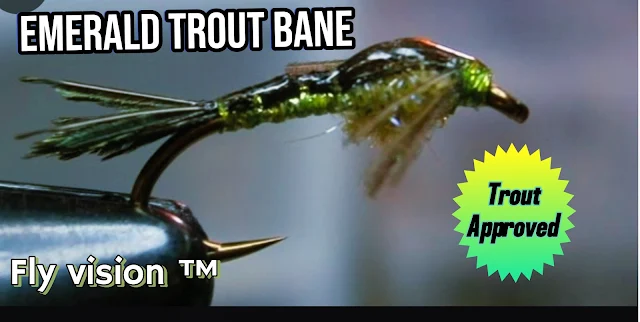









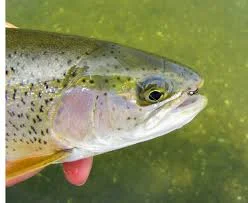

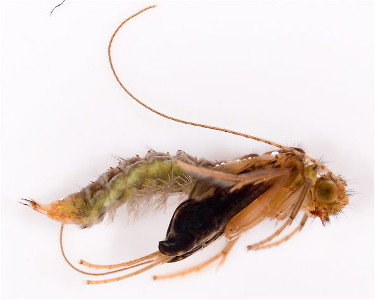
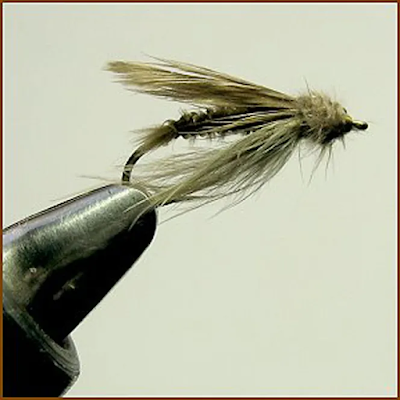






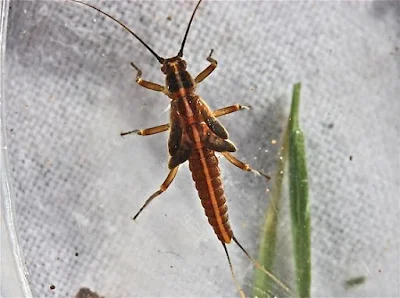







.webp)








